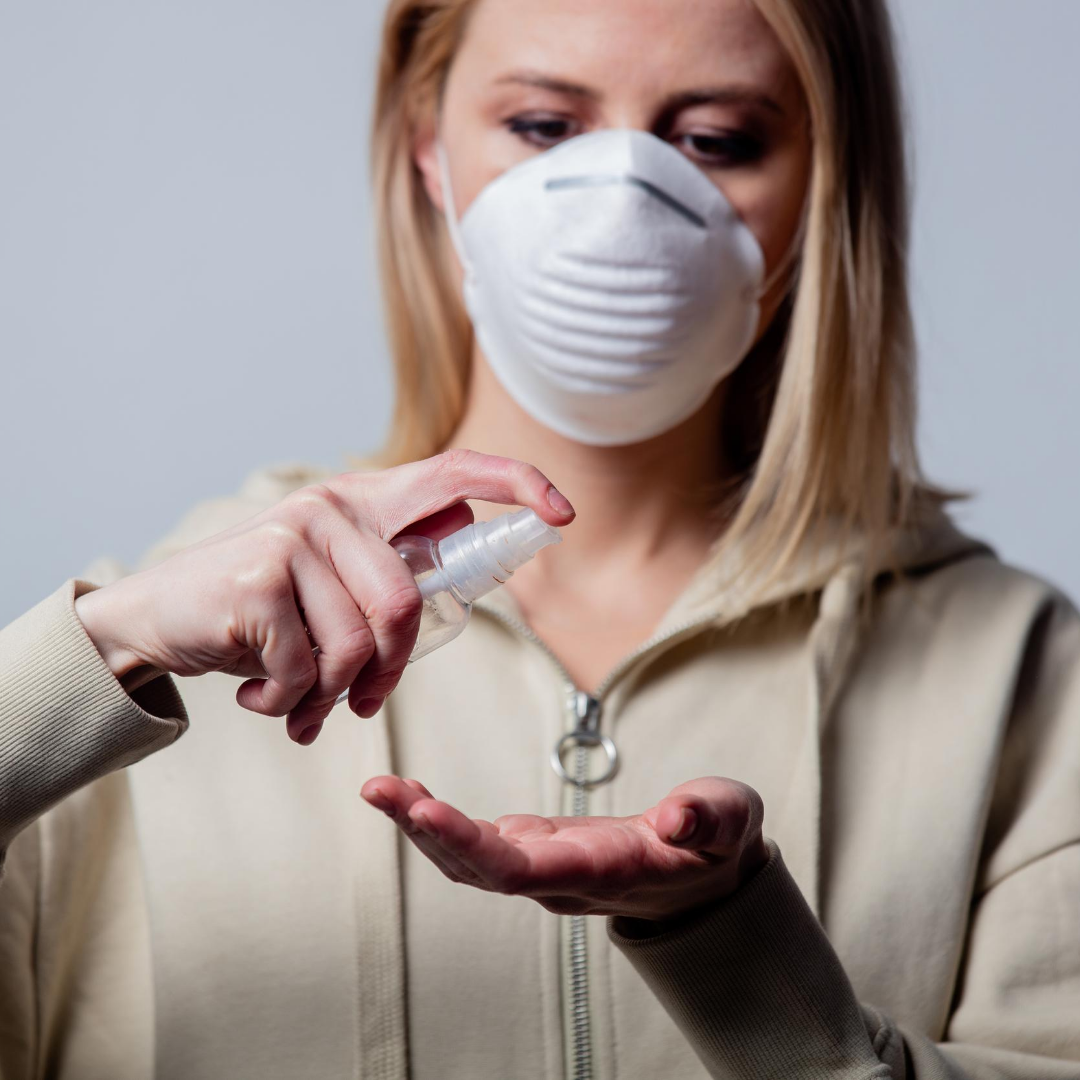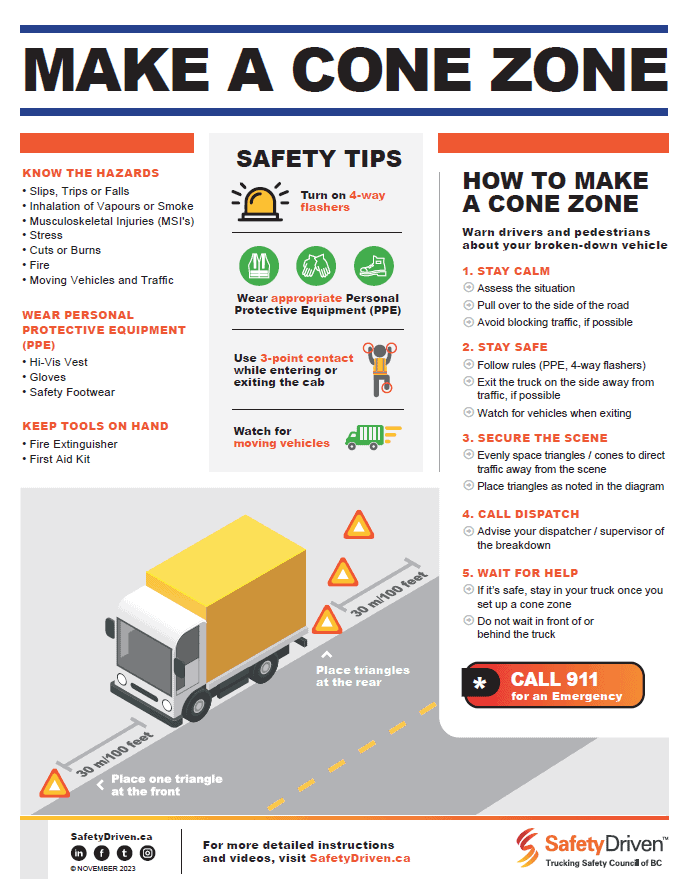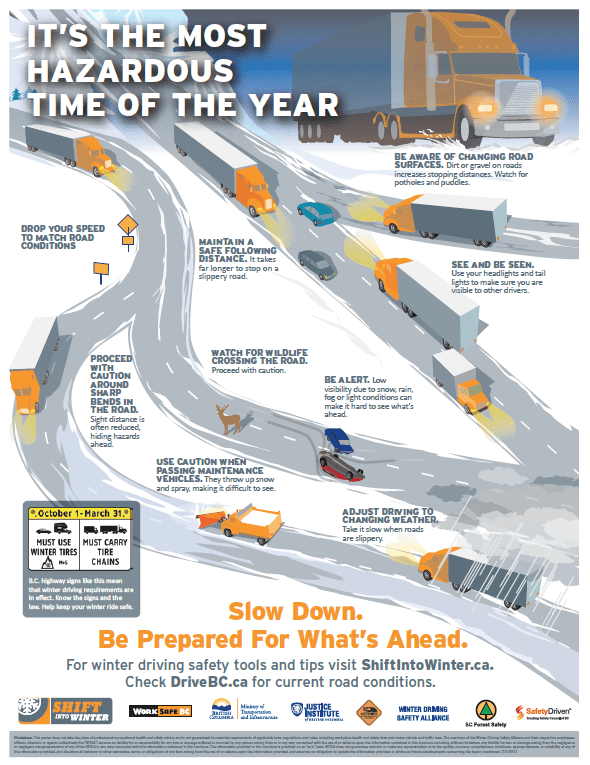
Use Caution With COVID Cleaning Routines
Get all the dirt on safe cleaning practices. Make sure you aren’t harmed by the cleaning agents that protect us from COVID-19.
Everyone in the trucking, transportation, warehousing, and shipping industries is working hard to follow the most current requirements and guidelines for preventing the spread of COVID-19. The BC Trucking Association, for example, has issued best practices for motor carriers that include “increasing regularly scheduled cleaning of operations with a disinfecting agent” and “wiping down all shared spaces with a disinfecting agent.” WorkSafeBC’s COVID best practices for general trucking recommend disinfecting high-touch areas inside and outside the vehicle, such as in-cab communication devices, air lines, landing gear handles, trailer doors, refrigeration/heater unit controls, and dollies.
Unfortunately, the chemicals that can protect us against transmitting the virus can also harm users who do not use them correctly, warns the US Center for Disease Control (USCDC).
“Calls to poison centers regarding exposures to cleaners and disinfectants have increased since the onset of the COVID-19 pandemic,” the USCDC report states. “An Internet panel survey identified gaps in knowledge about safe preparation, use, and storage of cleaners and disinfectants. Approximately one-third of survey respondents engaged in nonrecommended [sic] high-risk practices.”
BC’s Drug & Poison Information Centre has also seen a 60 percent spike in calls for adults exposed to cleaners and disinfectants since March, according to the BC Centre for Disease Control (BCCDC).
The Canadian Centre for Occupational Health and Safety (CCOHS) states that those who must use potentially dangerous chemicals to clean and disinfect workspaces can reduce the risks through proper training and by using personal protective equipment (PPE), such as gloves. SafetyDriven’s safety handout on COVID-19 cleaning and disinfecting recommends wearing nitrile or neoprene gloves while working with disinfectants.
The CCOHS general tips for using disinfectants and cleaning products also include:
– Follow procedures and safe work practices recommended by your employer.
– Check product labels and safety data sheets (SDSs) to know the potential hazards and safe work practices for the cleaning and disinfecting products you use.
– Use cleaning products appropriate to your workplace and according to the supplier’s recommendation.
– Do not mix cleaners and disinfectants unless the labels say it is safe to do so. Mixing products (such as chlorine bleach and ammonia cleaners) can cause serious injury.
– Do not eat, drink, or smoke while using bleaches, cleaning agents, disinfecting agents, or other chemical products.
In their tips for using disinfectants and bleach safely, BCCDC adds that you should always open a window when disinfecting and cautions that more concentrated solutions of chemicals are not more effective and may cause irritation to the eyes and throat.
Products should only be used for the manufacturers’ intended purposes. For example, do not use bleach and other disinfectants on food and never eat or drink any cleaning product.
With many people turning to alcohol-based disinfectants (including most hand sanitizers), it is important to remember that alcohol is flammable. Do not use it near ignition sources such as running motors and never smoke while using an alcohol-based product.
Visit SafetyDriven.ca for free online resources for drivers and businesses, including: COVID-19 resources and quick links for trucking and moving & storage, Personal Protective Equipment, How to Keep Truck Cabs Clean in the Fight Against Covid-19, Enhanced Surface Cleaning and Disinfecting
Latest Resources
Make a Cone Zone
Dowload this poster for tips on how to make a safe cone zone.Winter Hazards Poster
Drivers need to recognize winter hazards. Share this poster to remind drivers how to ...

